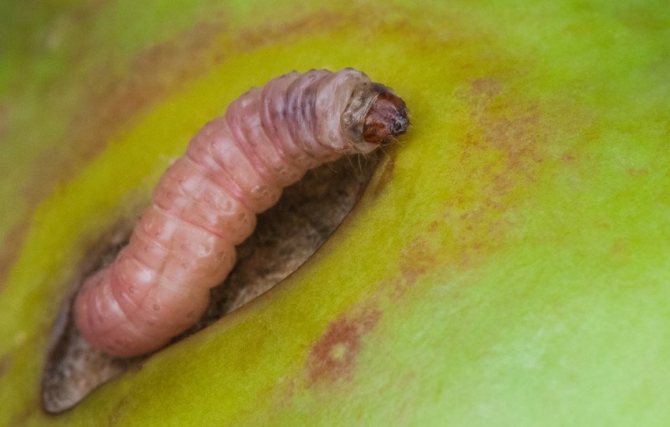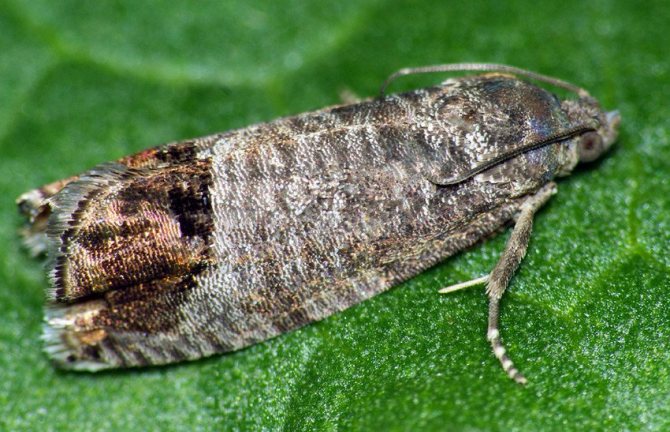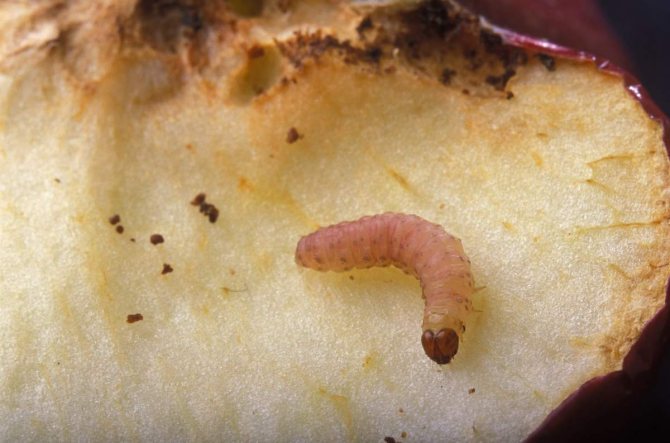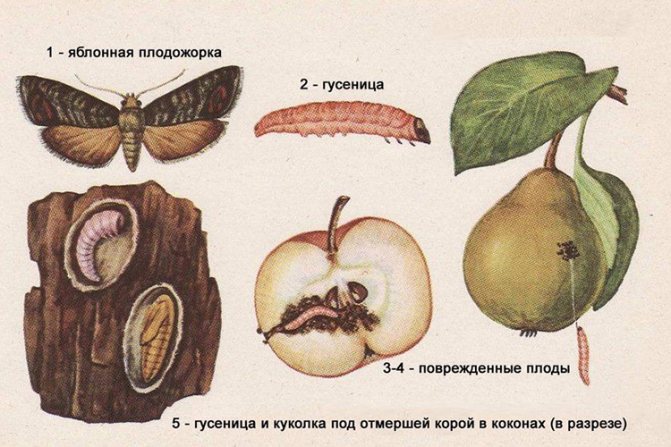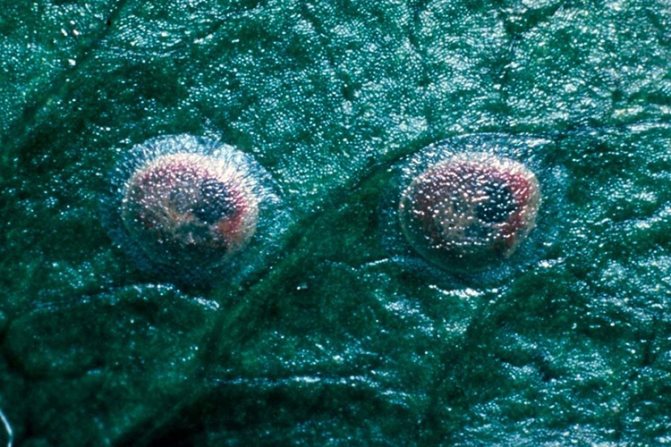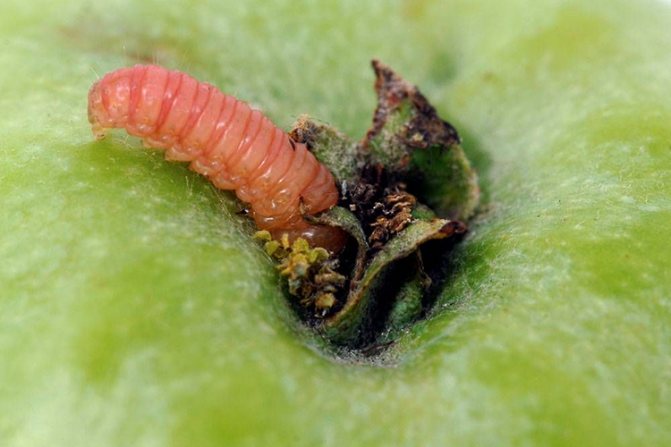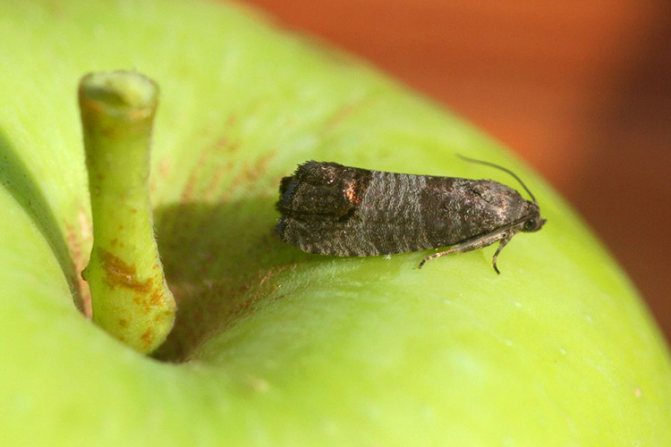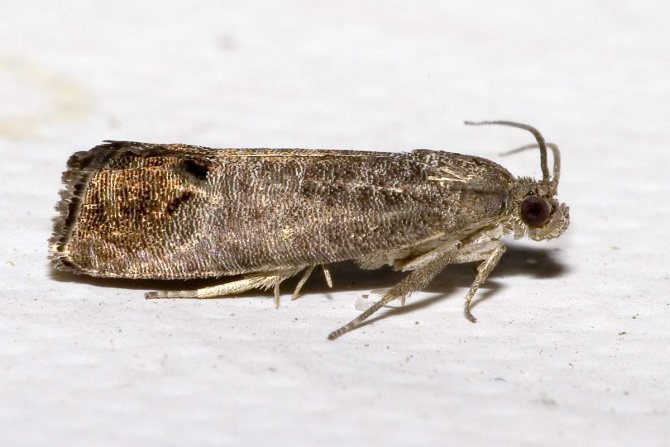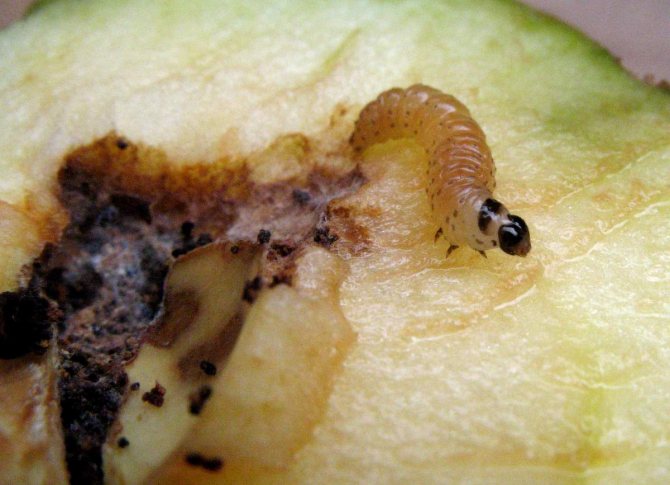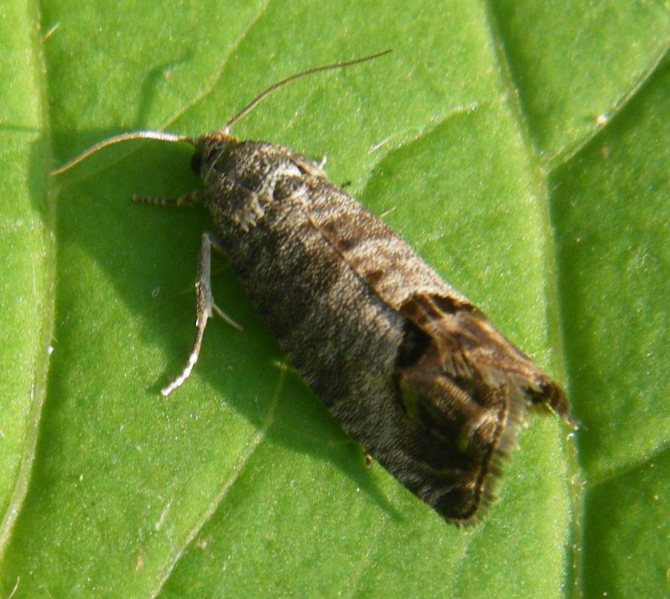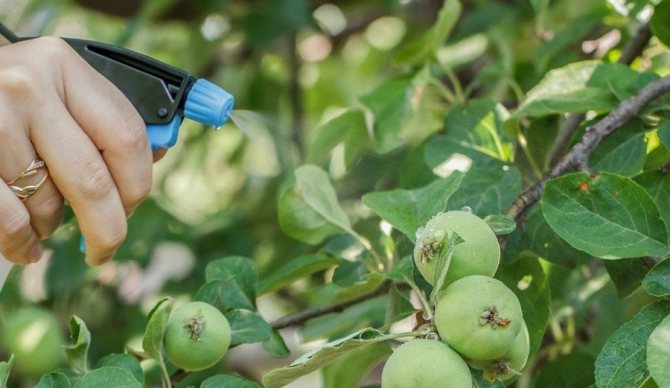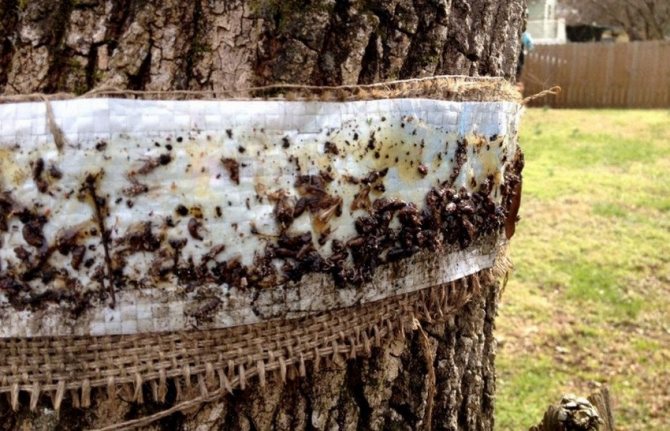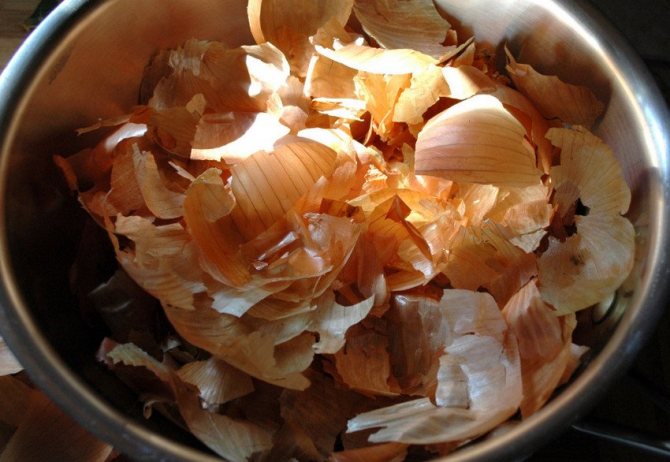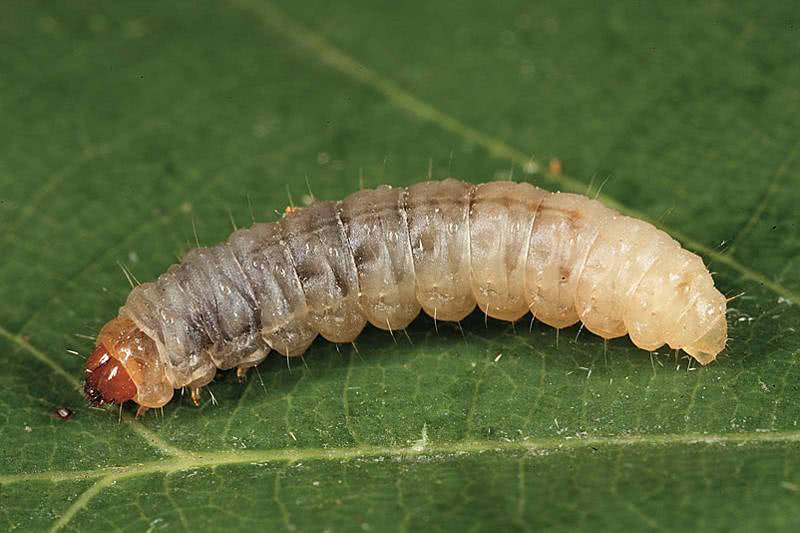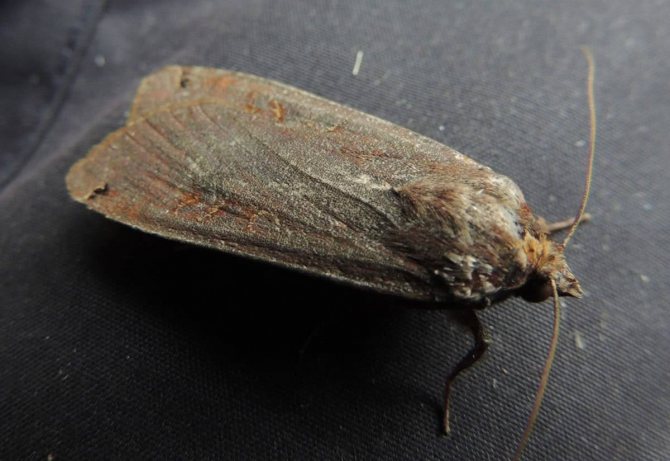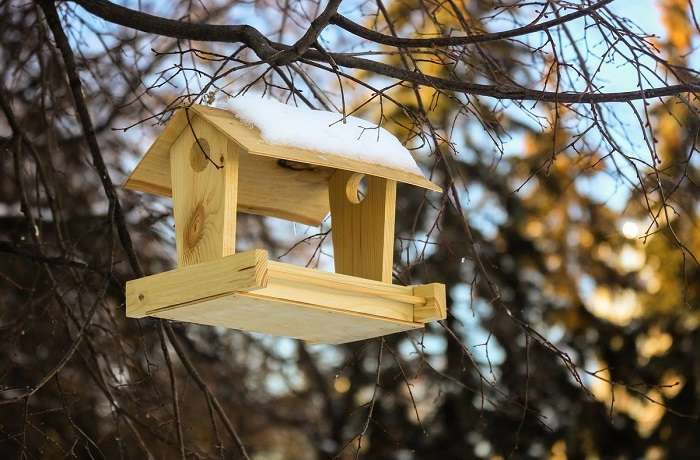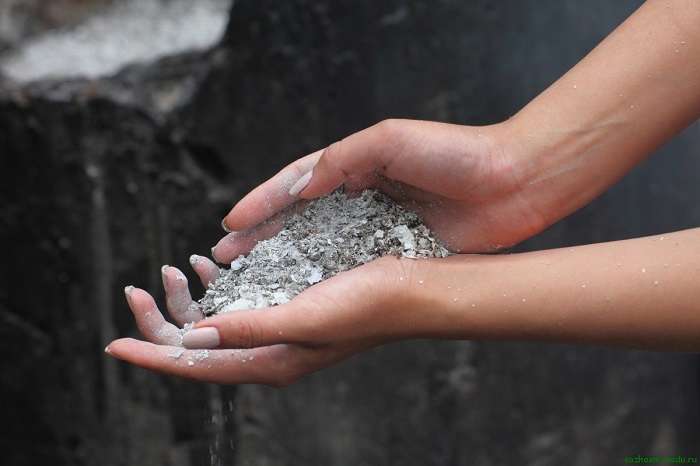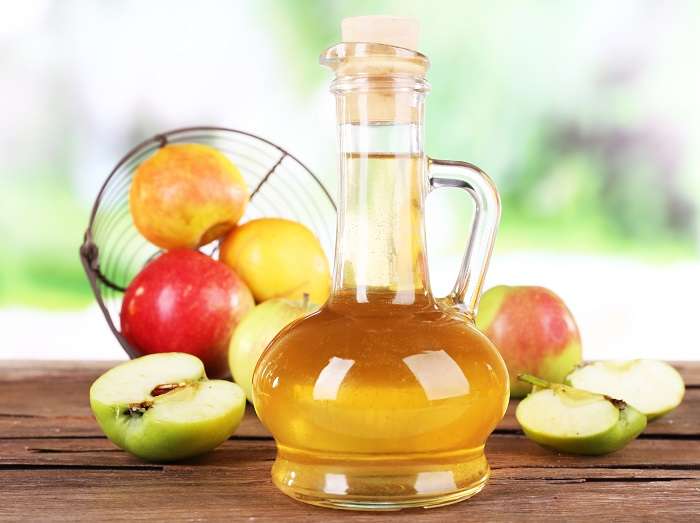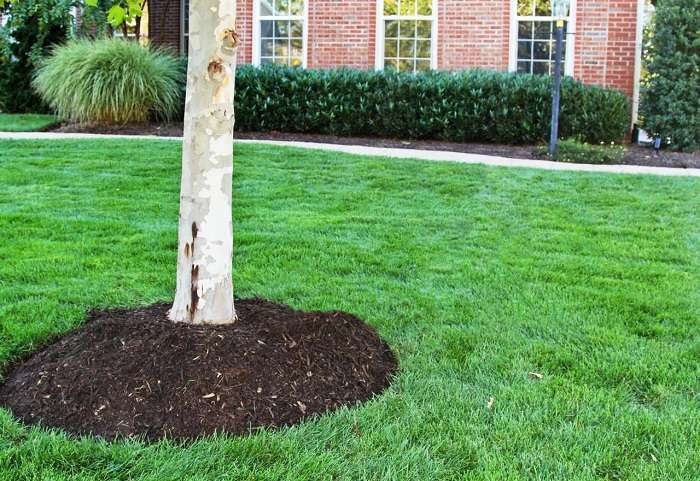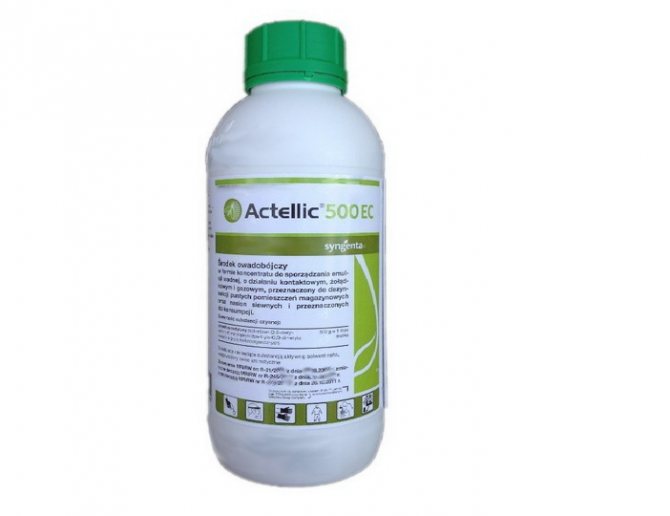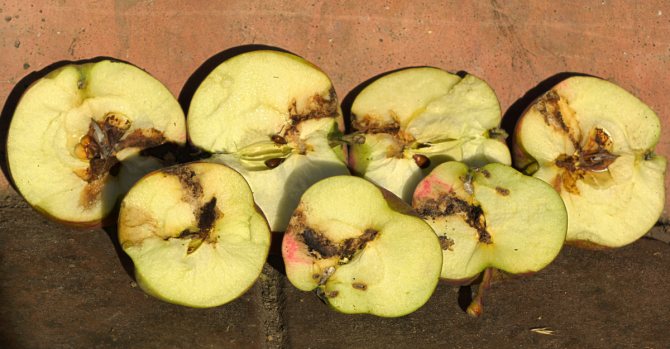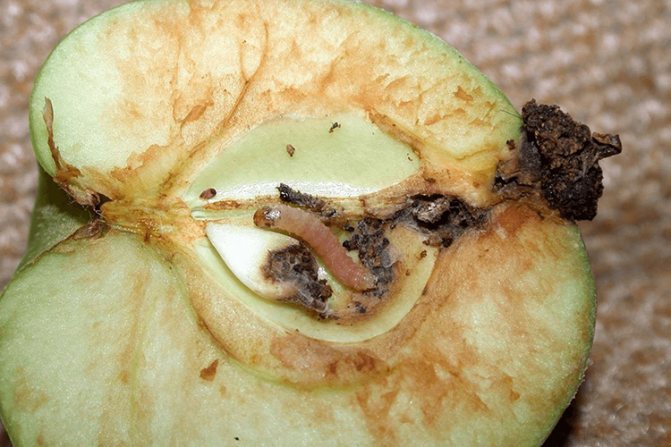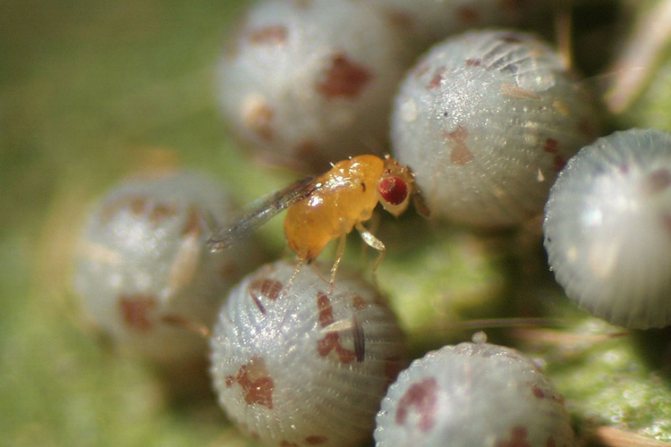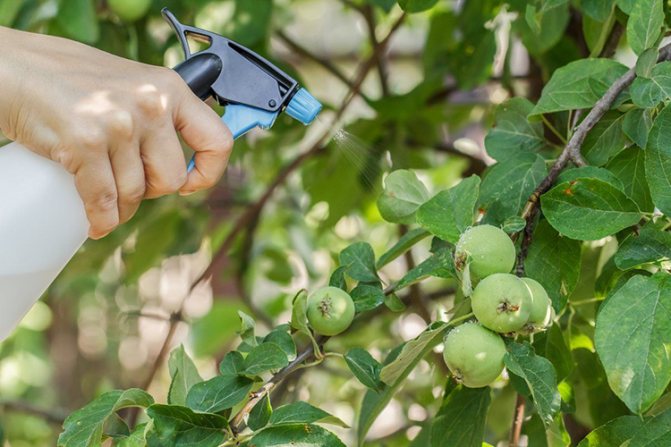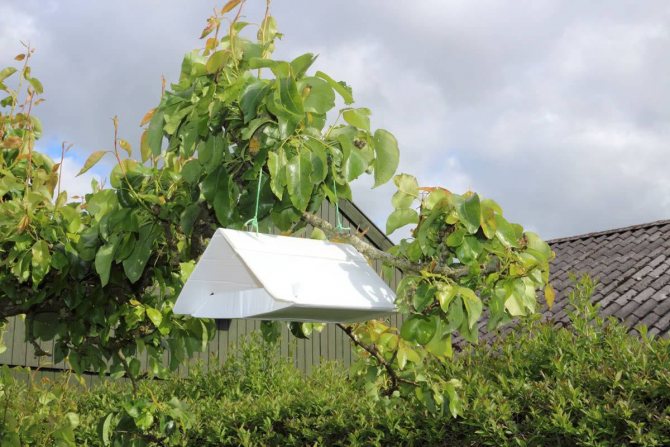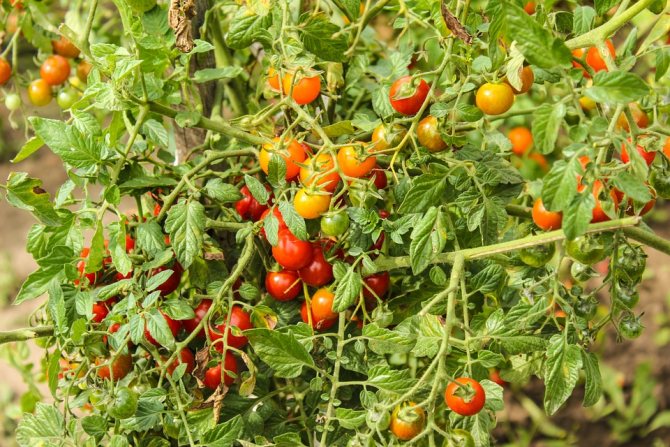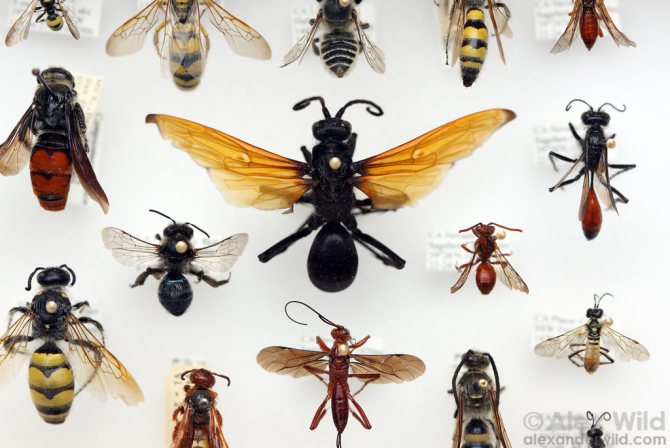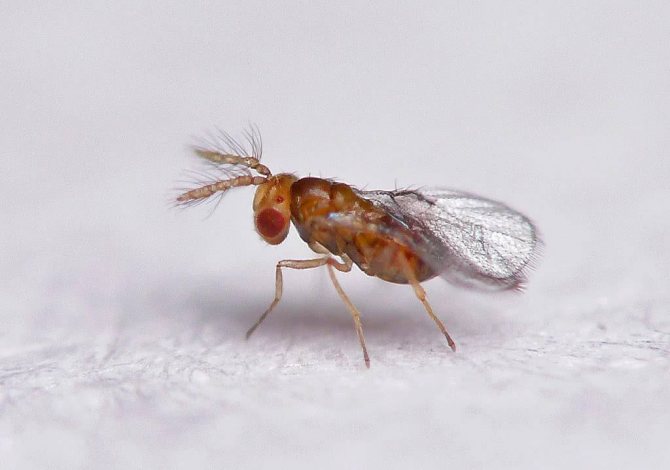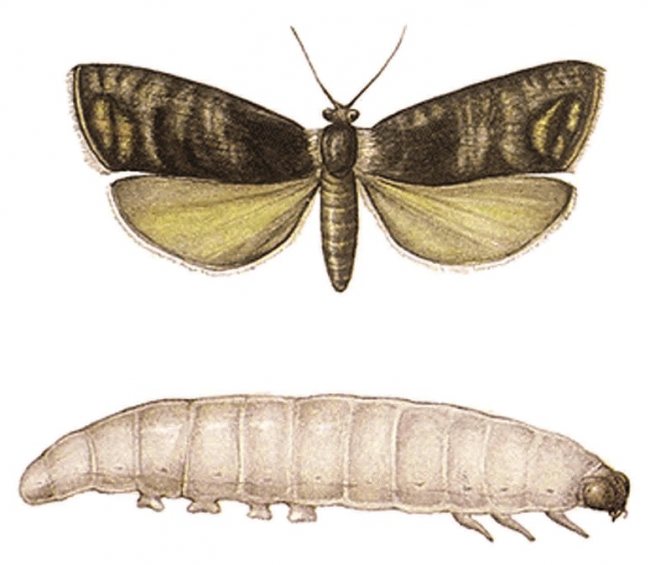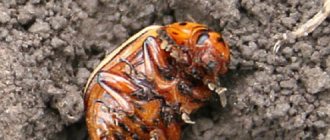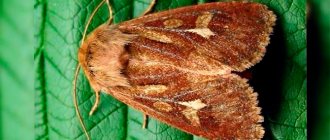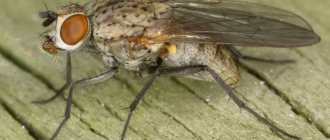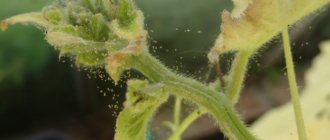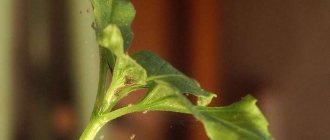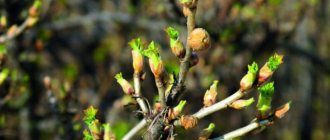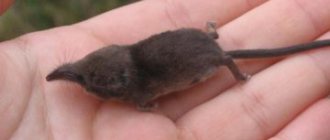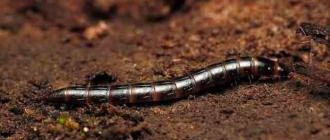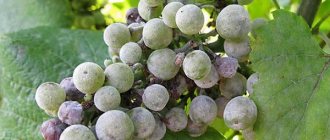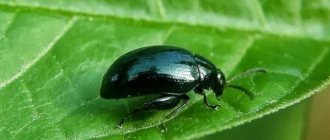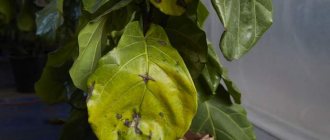The apple moth is a species of moths that parasitize fruit trees. It is one of the most common and dangerous agricultural pests. Most often, the insect infects apple and pear trees, however, it can harm plums, apricots, quince, peaches and nuts.
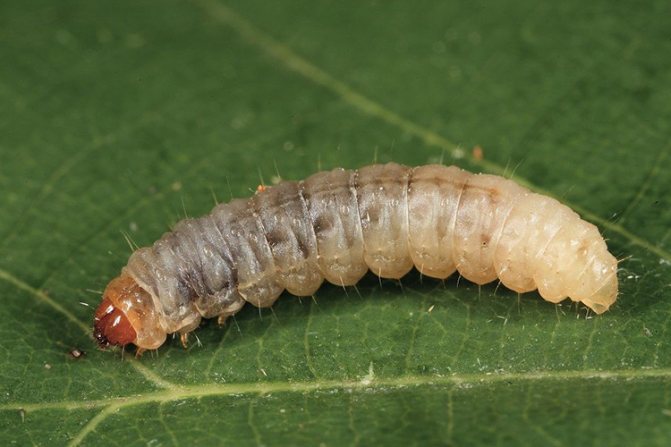
Damaged fruits are underdeveloped and fall off prematurely. Also, the insect contributes to the appearance of agricultural waste in large quantities. The apple moth can spoil from 25 to 80% of the harvest, depending on how many generations of this pest have time to appear in one season.
Symptoms and features of the insect
Symptoms of damage are increased flight of butterflies 12-17 days after flowering, as well as the presence of 1 to 5 or more microscopic holes in apple ovaries. Also, the appearance of a carrion in the form of full-fledged-looking apples, but on the cut inside them - gnaws and a eaten away seed chamber.
Eastern moth on an apple tree
Eastern moth is a dangerous quarantine pest of apple trees. Because in the South it develops in five generations and one apple can be populated sometimes by 5-7 larvae "worms". What is it capable of completely deprive the summer resident of the apple harvest.
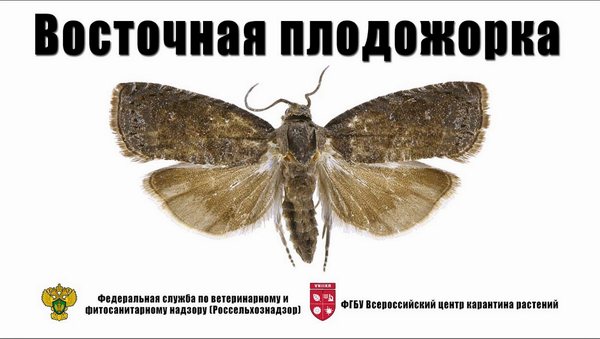

Spread
This butterfly is widespread the entire European part of the Russian Federation (excluding the tundra zone), and Caucasus and Transcaucasia, Far East and Baikal steppes, Central Asia, Siberia, Altai, South Belarus and Ukraine... Most harmful in the steppe zone of Ukraine, the Russian Federation and in the mountainous Crimea.
Influence of moisture on the pest
The number of this butterfly is most strongly influenced by atmospheric phenomena.
And especially mass death of its caterpillars is noted during prolonged periods of drought and heat (almost 100%), when the moisture in the atmosphere is reduced to 30%.
Note! The rampant death of caterpillars before their introduction into the pouring apples in the northern zone and in the Non-Black Earth Region during dry and hot July is observed much more often than usual.
Caterpillar - what is it?
The caterpillar is such little fat worm... On a pink or pinkish-reddish body with grayish dots, no hairs or pubescence are found.
The head and cephalothorax are chitinous, reddish-brownish in color, dark and clearly distinguishable from the apple background. Real legs with walking claws are observed.
There are also claws on the hind, fake legs. The length of the body of caterpillars sometimes reaches two centimeters. Below you can see what it looks like moth on apple tree - photo in different life cycles:
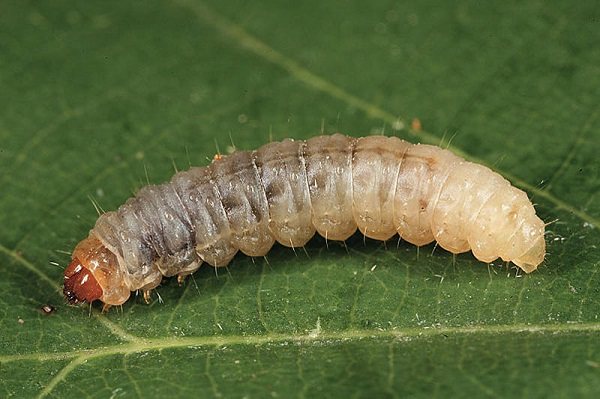

Caterpillar of the apple moth.
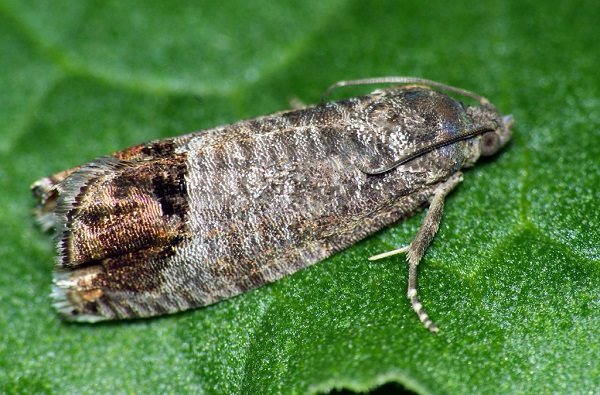

Apple moth butterfly.
Pest life cycle
The cycle with complete transformation, typical for the genus of butterflies, consists of the flight of adult butterflies, their mating, the laying of the butterfly in secluded places, the birth of caterpillars of the first instar, searches, introduction into the apple and feeding on the caterpillar with the fetus, leaving the fetus for pupation.
Important! Due to the dynamism and the presence of diapause, the period of each of the listed stages is not constant and differs greatly according to the zones of gardening.
Number of generations
In the north there are two generations in the apple orchards of an ordinary codling moth, on South - three generations, and for the oriental look and in the southern regions RF, the number of generations can be up to five.
First generation
In the northern areas of distribution of apple orchards, the first generation appears from the moment small apples grow, that is from late May to late June... In the south, it can be noted as early as the beginning of May.
Wintering stage
In winter, as a rule, caterpillars of 4-5 instars enter, in impenetrable silky white cocoons. Most often this is the second or third generation of the moth in a given year.
Apple varieties unaffected by the moth
At the moment there are no varieties of apple trees that are absolutely hardy to moths... The only thing gardeners have noticed is that apples with tasty and very tasty pulp are more often and more intensely damaged by moths, but varieties of the "juice" direction are less "loved" by caterpillars.
A Few More Granny's Tips
Sometimes completely unexpected means can help us in the fight against these harmful insects, which, nevertheless, will certainly be at hand.
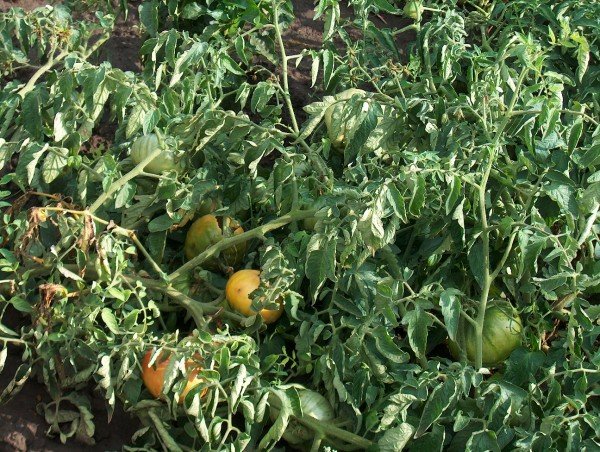

Tomatoes next to fruit trees will help prevent moth development in your area.
Do not forget that the apple and plum moth are nocturnal insects. To keep the trap jars out of the daytime insects that may be useful to your garden, hang the traps in the evenings. In the morning, you need to remove the cans, remove the insects that have got inside and store the mixture until the evening in a closed container in a cool place.
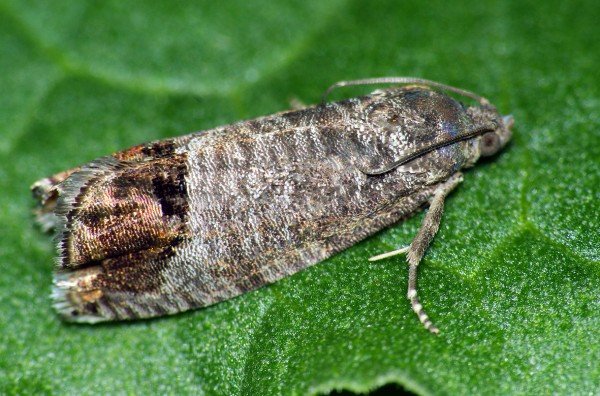

It looks like a butterfly of the apple moth
Spray fruit trees with the following products:
- infusion of wormwood;
- decoction of tomato tops;
- milkweed broth;
- burdock;
- yarrow;
- delphinium;
- chamomile;
- tansy.
Spraying with these infusions and decoctions should be carried out every 5 days.
Please note: plant tomatoes next to fruit trees: moth caterpillars are afraid of their smell. In this way, you can prevent the appearance of pests.
Fruit moth on an apple tree: methods of struggle
Control methods there are:
- Agrotechnical;
- Chemical;
- Mechanical;
- Biological.
Attention! Only their simultaneous use will help defeat the moth.
Apple trees, trimmed correctly and on time, fed, watered and with properly manicured soil, can withstand the invasion of these pests. Trees weakened by frost, hailstorm or overfed with "organic nitrogen" are much easier and more damaged by pests.
Also in the garden it is necessary to maintain bio-balance and expand the biological diversity of species, then natural predators and enemies of the moth will be able to destroy up to half of the pest, thereby protecting the garden from the invasion of insects and the use of synthetic poisons on apple trees.
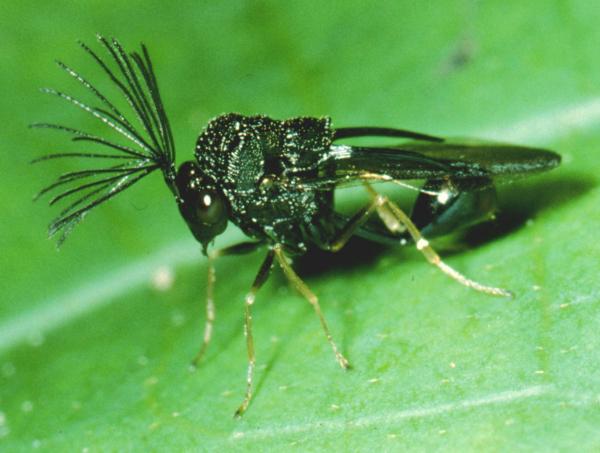

Trichogramma is the natural enemy of the moth.
How to deal with a moth on apple trees? Create conditions under which the development cycle itself will be either impossible or severely disrupted. And the tree and its fruits will become the least suitable for settling and eating by the moth caterpillars.
Look at the video for Oktyabrina Ganichkina's advice on how to save the apple tree harvest from the moth butterfly:
Insecticides for the apple moth - the basics of choice
Insecticidal treatments are recommended during the period when caterpillars emerge from eggs and before they are introduced into the fetus. This is best done in late May or early June, depending on the region. The number of treatments is from 2 to 5, depending on the variety of apple trees, the age of the trees and the scale of the moth infestation.
To obtain an effective result of controlling the number of insects - pests, it is necessary not only to strictly observe the processing regulations, which are reflected in the instructions for the preparation, but also to choose the right preparation.
Comparative analysis allows, according to certain criteria (composition / active substance, waiting period, frequency of treatments, basic properties and application features, etc.), to correctly select the necessary insecticide.
So, the remedies for the apple moth are TOP-13 recommended insecticidal preparations:
- Ditox, CE (dimethoate);
- «Karbofos, CE"(Malathion);
- Calypso, KS (chloronicotinyl);
- «Fufanon, CE"(Malathion);
- Fozalon, KE, Zolon, KE;
- "Bi-58, new, KE" (dimethoate);
- Vantex, MKS (gamma-cyhalothrin);
- "Accord, EC" (alpha-cypermethrin);
- «Actellik, KE"(Pirimiphos-methyl);
- "Gladiator SUPER, KS" (lothianidin and lambda-cyhalothrin);
- «Alatar"(Malathion and cypermethrin) and many others.
And two biological drugs - "Lepidocide"And"Fitoverm».
What contributes to the survival of the butterfly?
It is promoted by its abundance, reproduction by several generations a year and secluded wintering places.
Wintering places can be as follows:
- In the "old" apple orchards most of the wintering cocoons are located in cracks in the bark, at a distance of up to 60 cm from the plane of the earth, and the rest are in the ground near the apple trees themselves, as well as in places where humus is stored, supports, chatals, stakes, all kinds of buildings and other shelters located directly in the garden ;
- In young gardens caterpillars overwinter mainly in the ground near the “root collar” at a depth of up to 8 cm, not counting the fact that moth caterpillars overwinter in a packing substrate, in a box container, in places for saving apples, and they end up there with apples spoiled by them.
Stages of development
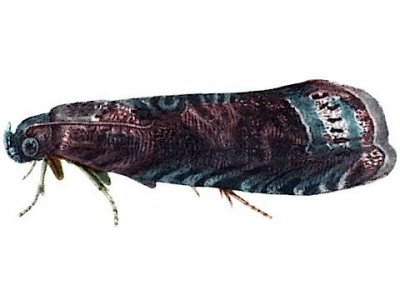

In the spring, from the cocoons that survived the winter, upon reaching air temperature 15 degrees moth butterflies fly out.
Apple moths pupate in 2 weeks from May to early June. Then they lay eggs on flower sepals, leaf surfaces and twigs.
Oriental pupae come to life a little earlier, as the first flowers bloom.
For 1-2 weeks, each female of the eastern moth lays up to 200 eggs (apple - up to 120)... A week later, caterpillars develop from them, which after a couple of hours gnaw into the fruits. Caterpillars feed on fruit pulp (apple - seeds inside the fruit) from 10 to 24 days, after which they crawl out and pupate on the surface of the fruit, in the axils of damaged shoots, under folded leaves. In the pupal stage, the pest lingers from 5 to 12 days.
After that, butterflies emerge again, mating, laying eggs and the activity of a new generation of pests.
Processing chemicals
Spraying apple trees from harmful insects is carried out synthetic chemicals based on organophosphorus compounds... But you can use both neonicotinoids and pyrethroids. Below we will consider how to process the apple tree from the moth and when, so as not to damage the crop.
Fitoverm
The effect of aversectin (Fitoverma) is complex: penetrating into the caterpillar by absorbing into the outer shells during spraying, or after eating poisoned apples, the poison affects the nervous system of the caterpillar, causing its death.
Attention! The effect of the substance based on "aversectin-C" lasts up to 20 days and cannot be used when pouring apples!
Can a herbicide be applied?
This is typical "Scam" modern hucksters. This substance has nothing to do with CGP, but it can ruin the life of apple trees, because the herbicide is a poison for plants and certainly does not harm the caterpillars.
Advice! Carry out chemical protection of apple-tree plants only with proven preparations from special stores!
Pesticides
Here the most effective pesticidescommercially available that will be effective in the fight against "worms in apples":
- Pyrethroids: Kinmix, Karate-Zeon, Lambda-cypermethrin, Sumi-alpha;
- Organophosphorus: Pirimifos-methyl, Actellic;
- Neonicotinoids (acting systemically): "Tanrek";
- "Confidor";
- Talstar;
- "Ram";
- "Fastak".
All of the above drugs are from the genus of neonicotinoids. And all artificial pyrethroids - lipophilic substances, excellently retained by the cells of apple leaves and fruits and partially penetrating into them, guarantee an absolute insecticidal effect on caterpillars. But they are applicable only a month before ripening.
Mixed insecticides
How to sprinkle apple trees from the moth, if the garden was previously treated haphazardly and at the same time the emphasis was on any one poison for a number of years? In this case, you need to spray the apple trees. mixtures of poisons. The following tank mixes are most suitable for this:
- Imidacloprid + Lambda-cyhalothrin;
- Thiamethoxam + Chlorantraniliprol.
Organophosphate insecticides
These compounds (the most famous Dichlorvos, Fozalon, Karbofos, Fufanon) turned out to be persistent and poisonous for nature organochlorine compounds.
These compounds have a low consumption of matter per unit area and a high rate of impact on the moth, which made these substances the leaders in the fight against caterpillars.
Folk remedies
The fight against the moth has been going on for centuries. It will not be possible to completely lime it, but we can significantly reduce the population, and thereby save the harvest. First of all, you can use grandmother's funds for this.
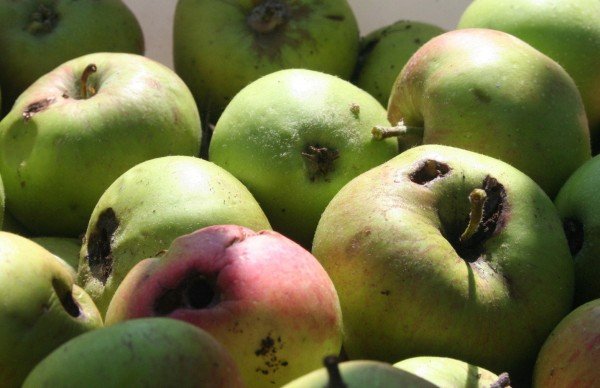

Signs of damage to the apple moth
- Constantly get rid of damaged, rotten parts of the tree: it is in such areas that the moth lives and hibernates. It is better to burn these branches.
- Collect fallen affected fruits every night. If you do not plan to use carrion, then bury it half a meter deep, preferably away from your site. Never throw such fruits into the compost pit!
- Beginning in May, install the so-called trapping belts. This can be a sheet of corrugated paper that needs to be fixed on a tree trunk at a height of 30 cm from the ground, tied with a rope. Remove the belt every week and remove the stuck tracks, then reinstall.
- By the end of autumn, clean out any trees that have been infested. Spread a canvas under the tree and scrape off the caterpillars with a stiff brush, starting from a height of about 50 cm.After the cleaning is finished, whitewash the trunks of the fruit trees.
- Apply camphor alcohol. Saturate about 10 pieces of cloth or cotton wool with it and hang over the crown. The procedure must be repeated every week as the alcohol evaporates. One month before harvest, you can stop processing.
- Hot water treatment of trees also shows good results. The temperature should be no more than 60 degrees, so as not to damage the leaves and fruits. Spray it with a spray, the caterpillars fall dead as soon as hot water hits them.
Using folk remedies is quite time consuming, and if you have a large garden, then these methods are unlikely to suit you. It is better to use chemicals for processing.
Spraying time
The timing when to spray apple trees from the moth is strong differ for each region of the Russian Federation and for every spring. Therefore, it makes no sense to indicate them, since they are determined on the spot by the time of the beginning of flight of adult butterflies in spring and its intensity.
In the spring
The greatest efficiency in spring processing was shown by organophosphorus preparations... They exterminate caterpillars during their birth and the pest does not have time to "reach" the small apples. The most effective will be:
- "Calypso";
- "Admiral";
- "Sirocco";
- "Zolon";
- Lannat-20L;
- Pirinex;
- Chlorpyrifos.
After flowering
Poisons are used during the mass flight of butterflies "Insegar", "Dimilin", "Gerold"... These drugs belong to the group of insect growth and development regulators. Females lay eggs on the poisoned surface, so the caterpillars will inevitably die.
Combinations of synthetic poisons are also suitable, for example, Thiamethoxam + Chlorantraniliprol.
During the period of fruit ripening
Using belts, ferromone traps, biological products and decoctions of herbs poisonous for caterpillars allowed at the time of ripening of summer and autumn apples.
Caution! It is prohibited to use synthetic poisons during this period!
Dates in autumn
As soon as the leaves have passed, in the fall, you can spray and clean the apple orchard. The crowns are sprayed with poisons, and the trunks and branches are cleaned with scrapers from the old bark. It is not worth doing this before these deadlines.
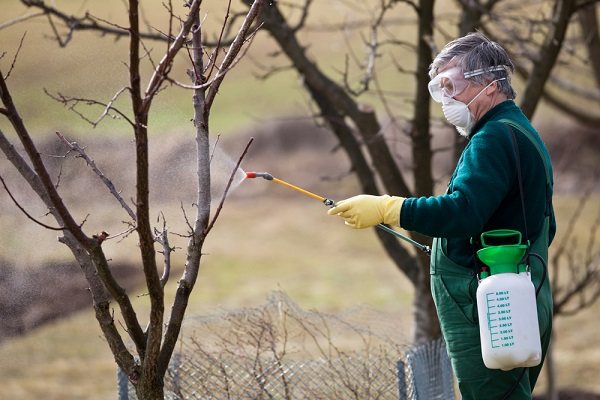

Spraying the garden after the leaves fall.
The first period when to process apple trees from the moth is the moment of early spring summer. Before the apple trees themselves begin to bloom.
The processing period consists of two parts - before flowering and after. It ends when the apples begin to “gain color”.
How often to spray?
In places where the moth forms 2 "waves", 4 sprays are needed on winter apples, and two sprays on summer apples.
In conditions where three generations of the codling moth develop, 5 sprays are recommended for summer and autumn varieties and 7 for winter ones.
Time of processing:
- Quiet cloudy day and complete calm;
- Pre-dawn or sunset hours.
Because in the heat, drugs reduce their "toxicity", and the wind will reduce the quality of processing.
Spraying terms in the regions
In the south of Ukraine, in the Lower Volga region, Rostov region, Stavropol Territory spraying should be started 12-15 days after the end of flowering. Repeat spraying in about 11-18 days after the appearance of the first caterpillars in the first carrion.
In the zone of the North Caucasus, the south of the Lower Volga region, in the Krasnodar Territory the first spraying is carried out 9-11 days after the end of flowering of apple trees; the second - usually 21 days after the first, and the third - when live caterpillars are found in the carrion; the fourth - 14-19 days after the third.
Additional treatments are possible only in the event of a pest outbreak and only for "winter apples".
Description of the codling moth
The apple moth butterfly has a dark gray color. Its wingspan is 18-20 mm, and their length is 10 mm. When stationary, they are folded like a roof:
- the front wings are dark gray with transverse dark stripes and a large yellowish-brown spot with a golden-bronze tint at the apex of the oval wing.
- the hind ones are light brown with fringes along the edges.
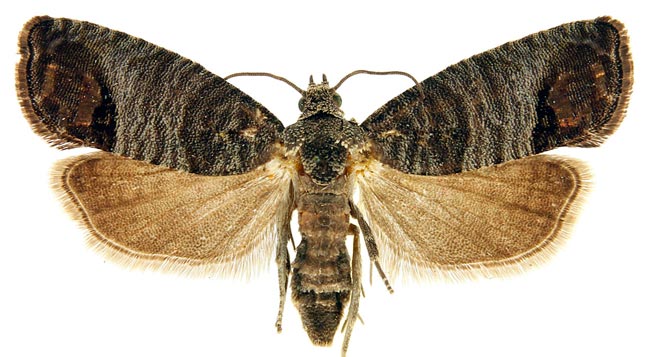

Butterflies begin to fly simultaneously with the flowering of the apple tree, and by the time the ovaries form, they can be seen much more often. The flight of insects lasts 1.5-2 months, their maximum activity can be seen in the evening.
After additional feeding and mating, female butterflies are ready to lay eggs, which are located one by one on the lower and upper side of the leaf, bark of branches, shoots or fruits. Fertility reaches up to 180 butterflies.
As for the egg itself, its diameter is about 1 mm. It is translucent, greenish-white and shiny.
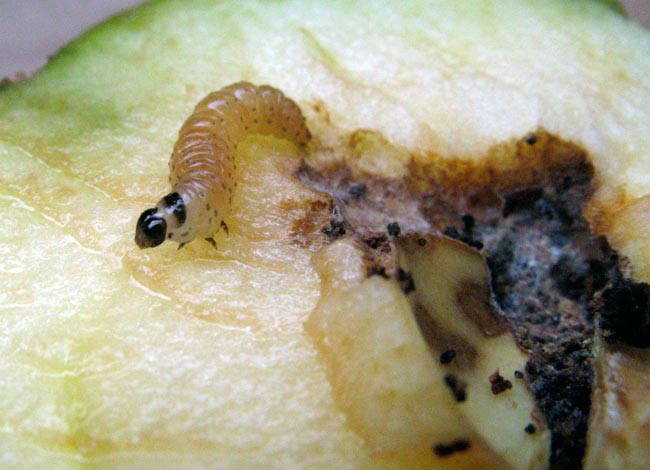

The caterpillar emerging from the egg has a length of about 18-20 mm. Its color is flesh pink on the dorsal and lateral sides and yellowish white underneath. The head and prothoracic shield of the caterpillar are brown.
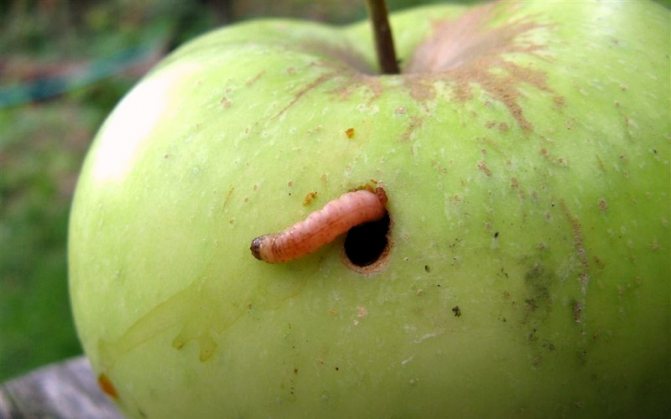

Environmental control methods
It is believed that these methods to combat this insect and its caterpillars on apple trees least dangerous for nature. The most effective will only be trapping belts, pheromone traps and bioinsecticides.
Below we will consider the most effective ways to get rid of the moth on an apple tree using ecological methods.
Pheromone traps
The basis in such traps is created as a drug form of pheromone "SR-MK"... It is important that pheromones are used in all apple orchards synchronously. And the use of traps only in some garden plots can only cause the accumulation of a large number of male codling moths in these gardens and this will not give an effect.
Fighting the moth on an apple tree with folk remedies
This use decoctions of wormwood, tops of tomato or potatoes or infusion of shag, also includes collecting and burning volunteers and cleaning the trunk from old bark in the fall.
Methods without chemistry
And how to deal with the apple moth without synthetic poisons? Caterpillars can be dealt with with biologics. Of the most effective can be about and "Lepidocide".
Trapping belts
To destroy the caterpillars of this insect, they make Canvas "belts"then they only catch, or canvas with poison, then these are killing belts and they are placed a couple of days before the first generation caterpillars begin to emerge from the fruit, when "worms" of the maximum size are visible in the carrion - you can wind the belts on the bole.
Inspect belts need once in two weeks and all pupae and caterpillars should be cleaned in a container with a solution of liquid soap. And you don't need to look through the killing belts. They are impregnated with FOS once every 10-12 days. And then the impregnation is simply repeated.
Glue composition
The catching belts are smeared special adhesive mixture or simply medical petroleum jelly.
This glue is prepared from 10 parts of resin, 1.5 parts of rosin, 1.5 parts of paraffin and 2 parts of garden varnish. This is all slowly heated over a fire until it becomes a paste. If, during cooling, the mass sets too quickly and sticks weakly, then it is heated again and 1 part of melted fat or butter is added.
For lubrication, you can also prepare a mass of wax 450 grams, rosin 290 grams and oil up to a liter, better than vegetable. First, the first two components are slowly heated, and then oil is added so that even after cooling on a spoon, the mass would be sticky, but did not drain.
Integrated protection
Integrated apple moth protection is the best answer to the question "how to protect an apple tree from a moth".
Such protection is a special approach to the "collective use" of all available methods of containment or extermination of the codling moth, covering mechanical, physiological, biological, biogeocenotic, agrotechnical, chemical methods of control and regulation of the number of caterpillars used with the main purpose is the lowest cost of funds and minimal damage to nature to reduce the number of moths on apple trees.
Preventive actions
There are three ways how to deal with the moth and its caterpillars in the garden:
- agrotechnical;
- biological;
- chemical.
The most harmless, however, are effective preventive measures. In order not to let the moth into your garden, you need to carefully dig up the soil in the trunk circle in the fall. This procedure will help to extract the cocoons with caterpillars to the surface of the earth, where the first frosts will destroy them.
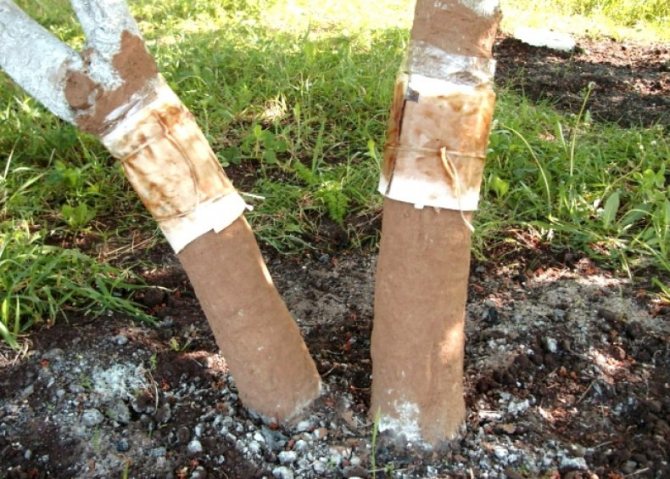

It is necessary to get rid of plant debris, in which caterpillars can also hibernate. In early spring and autumn, tree bark requires processing. Old sites, the presumable places of stay of pupae, are subject to removal. The bark removed must be burned.
The carrion should not be ignored. It needs to be picked up more often.
You can plant in the immediate vicinity of herbaceous plants that attract insects - natural enemies of caterpillars. Also, with the help of the equipment of feeders, insectivorous birds are attracted to the garden.
Butterflies hate the smell of tomatoes. Therefore, you can scare them away from the garden by planting tomatoes or mustard, dill nearby.
In summer, as protection against the moth, you can use trapping belts. They are manufactured as follows. Strips of 25-30 cm are cut from paper, fabric, burlap. They need to wrap a tree trunk at a distance of 30-40 cm from the ground. From above, the trap is tied with twine. Do not attach at the bottom.
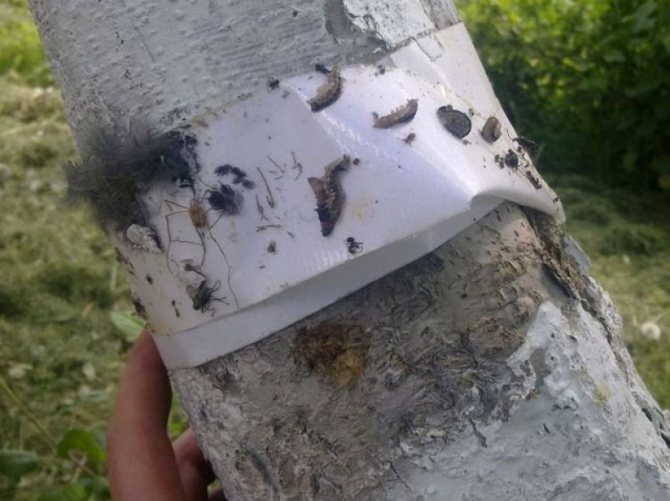

Caterpillars, making their way to the fruit along the trunk from below, will fall into a trap. They will need to be removed and destroyed from there. Traps can be impregnated with caterpillar glue.If the tree is more than 20 years old, the material or paper can also be coated with betanaftol.
You can also use regular sticky tape for catching flies as a trap. It is advisable to inspect the hunting belts at least once a week.
Butterflies can be caught by hand. As they fly out at night, they are attracted by bright light and then captured and destroyed. You can trap under the light source with duct tape or sticky paper.
After harvesting the fruits, the containers where they are stored are covered with corrugated paper. It will be hit by caterpillars leaving the carrion. Containers should be tightly closed and free of cracks. Subsequently, the paper with caterpillars is removed and burned. Apple containers are cleaned and treated with boiling water.
Questions From Readers:
Do the starlings on the apple tree feed on caterpillars?
Although there is information on the Internet that these birds feed on the caterpillars of this harmful insect, this is not so. They are pecked en masse only different types of tits, and then at the moment of their emergence from apples and crawling into wintering places.
Flowers protecting the apple tree from worms
Another "panacea" for worms in apples from the Internet, especially spread by supporters of "BIO-farming", is called planting under apple trees of special types of flowers that scare and kill the pest.
It is a pity, but this method cannot give anything but disappointment and a crop lost from the pest, because biology is not "led" to fashion trends, and the butterfly does not die only from the smells of plants.
Regular processing of apple moths in summer will provide many delicious apples in autumn and winter!
Modern pesticides in pest control
Old "grandmother's" drugs had a number of disadvantages:
Superiority of modern pesticides:
- the pest's body cannot adapt to these drugs;
- not harmful to beneficial insects such as bees;
- the tree can be under their protection for up to 3 weeks, not afraid of rain;
- instant action on the moth and other pests;
- can be absorbed into fruits and leaves, which does not leave pests any chance of survival;
- destroy the entire family of moths: butterflies, caterpillars and even eggs.
What is the danger of a pest?
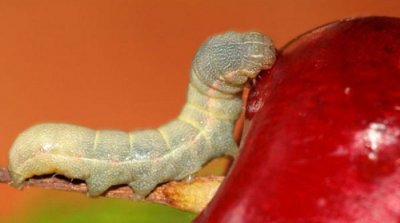

And the eastern and apple moth - some of the most dangerous pests fruit trees (read about other pests of apple trees and other garden trees here). The first one is even considered quarantine.
That is, when importing fruits such as peaches, apricots, plums, pears, apples, cherries, cherries, an inspection and sampling for the presence of infestation by these pests must be carried out.
When found, all of their products are subject to destruction to prevent proliferation in the area. The danger lies in the high reproduction rate of the moths and their polyphagia (polyphagia).
Caterpillars of the eastern moth of the first generation can develop even before the fruits appear - in branches and young shoots... Gnawed at 10 - 15 cm, the plants crack and gradually die.
Caterpillars of the codling moth fly out a little later and spoil the fruits, gnawing passages in them and leaving traces of vital activity along the entire path, thereby making the apples spoiled. But both those and other larvae for wintering use the bark of trees and root areas.
So in China, a record was recorded for the destruction of the pear harvest (up to 50%), and our southern regions are losing 70% of quince. Peaches of late-ripening varieties may not be obtained at all due to damage by moths.

